Sunday, December 6, 2009
Jaisalmer
Woke up this morning after a night spent sleeping on the sands of the Thar desert, and Eric, who also slept in, yes, the desert, says, “Man, there’s a lot of sand here. Then as our guides pack up the blankets, I see a critter scampering around on the sheet I slept on, the shape of which I had only ever seen—at least alive—in books and pictures. You know: two big claws in the front, one long, sinister tail at the back.
Yeah, I slept on a scorpion.
Thankfully, I didn’t know until the morning. But that didn’t change the fact that I slept in fits. As far as I can remember, it was the first night I’ve ever slept truly under the stars, without even a tent or a tarp for cover.
Our camels had gotten us to the dunes just before the sun set. It seemed to accelerate as it neared the horizon, sliding faster and faster into dusk. And then when it disappeared altogether, and the grayscale faded to black, they started to turn the stars on, maybe dozens at a time. Then more, and more, until in the far, far reaches they were packed so tightly together they formed clouds, or were they galaxies, the kind of night sky common to some but countable on one hand in my memory.
It didn’t look like that, of course, but that shot made me happy. As much as I’d like to, I don’t think I qualify as a full-fledged space geek, but I know my share of Apollo astronauts, and I’ve gawked at my share of Hubble photos. So it was a kind of mini thrill to prop up my little D40 on my backpack, leave it open for 30 seconds, and then find something in the LCD that kind of, just kind of, resembled those deep field images of the farthest points of light in the universe.
After just an hour or so, the stars faded as the moon began to rise directly opposite to where the sun had set. When our guides ran out of songs to sing around the campfire, we began preparing for bed, laying out sheets and blankets and more blankets, and it was still really damn cold. There were no mattresses as advertised, and the sand was surprisingly hard, so, as I said, I slept in fits.
As the evening wore on, and then fully through the dark of night, I woke up every couple hours and tracked the trajectory of the moon as it followed, from left to right, the course of what felt like a giant, invisible pro-tractor centered at my feet. Each time I switched lying from one side to the other, I would open my eyes and the sky would be brighter, the dunes would go on farther, as the moon rose higher, until it was directly above me.
In that wistful space between sleeping and waking, I honestly thought I could feel the world turning. I sensed I could pincite the fixed point of the sun that we had rotated away from hours earlier, and we on this sliver of Indian desert were now passing by the moon as it too passed by us on its own rotation. And the sky began to find color again, and the blue I saw each time I woke up was less light, less faint, until there are footsteps around me and Eric makes the astute observation that there is a lot of sand in the desert and the guide packs away my blankets and there is a scorpion on my bedsheet.
But even then, the moon hovers in the sky, maybe two-thirds of its way to the other side of the Earth, and the sun starts peeking over the dunes just south of where the moon had risen, and I get up and drink some chai and remount my camel and trot out of the desert.
As the world turns.
Subscribe to:
Post Comments (Atom)


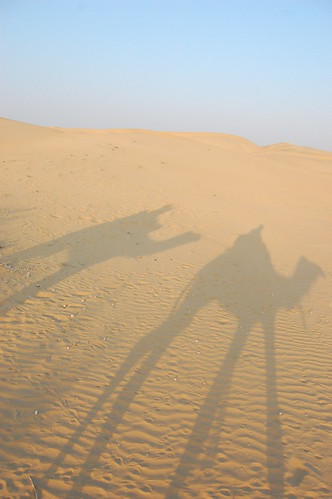
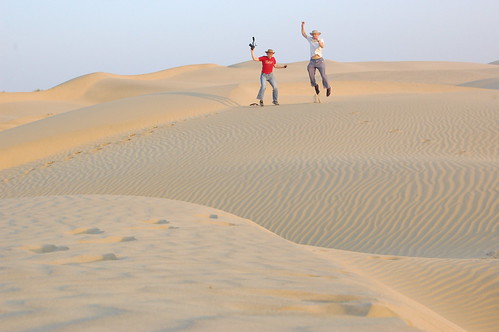
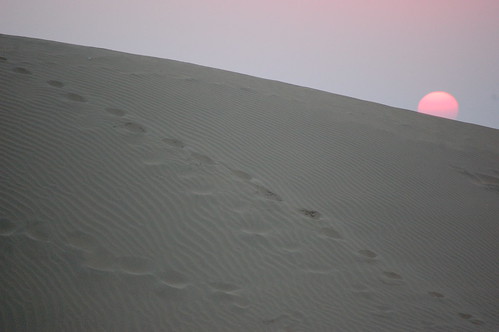

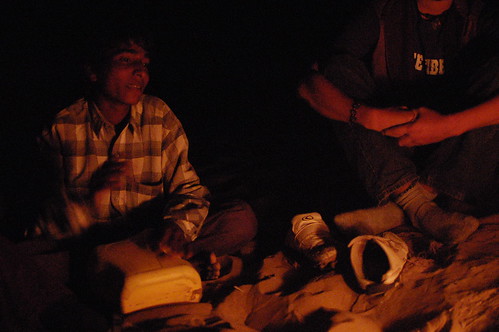
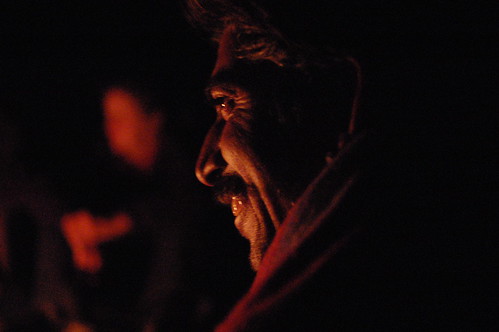
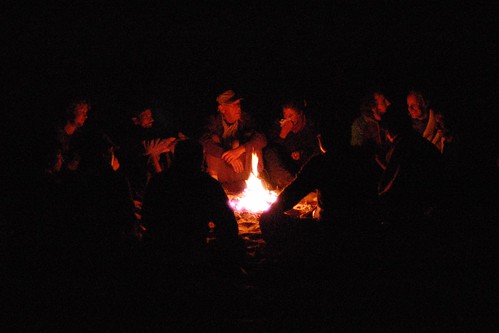
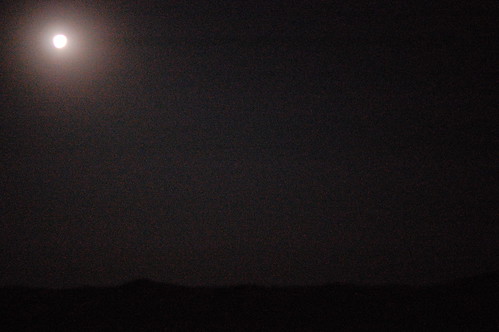
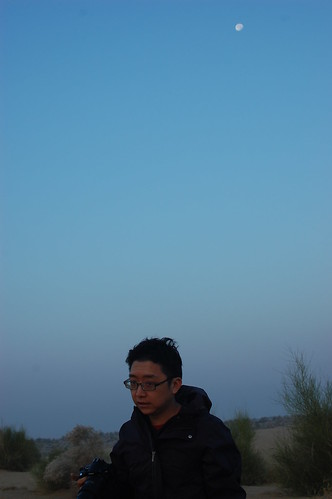

No comments:
Post a Comment